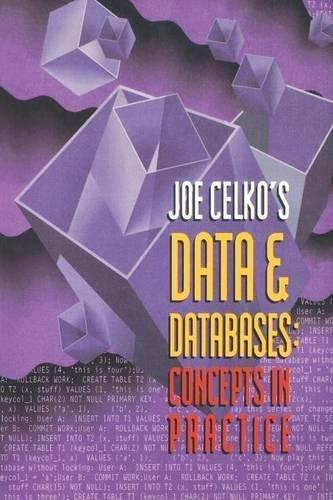Question
#include DisjSets.h /** * Construct the disjoint sets object. * numElements is the initial number of disjoint sets. */ DisjSets::DisjSets( unsigned numElements ) : s(
 #include "DisjSets.h"
#include "DisjSets.h"
/** * Construct the disjoint sets object. * numElements is the initial number of disjoint sets. */ DisjSets::DisjSets( unsigned numElements ) : s( numElements, -1 ) { }
/** * Union two disjoint sets. * For simplicity, we assume root1 and root2 are distinct * and represent set names. * root1 is the root of set 1. * root2 is the root of set 2. */ void DisjSets::unionSets( int root1, int root2 ) { if( s[ root2 ]
/** * Perform a find. * Error checks omitted again for simplicity. * Return the set containing x. */ int DisjSets::find( int x ) const { if( s[ x ]
/** * Perform a find with path compression. * Error checks omitted again for simplicity. * Return the set containing x. */ int DisjSets::find( int x ) { if( s[ x ]
#ifndef DISJ_SETS_H #define DISJ_SETS_H
// DisjSets class // // CONSTRUCTION: with int representing initial number of sets // // ******************PUBLIC OPERATIONS********************* // void union( root1, root2 ) --> Merge two sets // int find( x ) --> Return set containing x // ******************ERRORS******************************** // No error checking is performed
#include
/** * Disjoint set class. * Use union by rank and path compression. * Elements in the set are numbered starting at 0. */ class DisjSets { public: explicit DisjSets( unsigned numElements );
int find( int x ) const; int find( int x ); void unionSets( int root1, int root2 );
private: vector
#endif
/*
* Driver.cpp
#include
#include
#include
#include "kruskal.h"
#include "Edge.h"
using namespace std;
int main( int argc, char* argv[] ) {
vector
/* works perfectly
Edge e1(2,1,2), e2(1,3,5),e3(4,3,1);
vector
edges.push_back(e1);
edges.push_back(e2);
edges.push_back(e3);
spanningTree=kruskal(edges,4); // 4 -number vertices
*/
//vertices a=0, b=1,c=2,d=3,e=4,f=5
Edge
ab(0,1,4),
ac(0,2,1),
bc(1,2,3),
bd(1,3,6),
be(1,4,5),
bf(1,5,4),
cd(2,3,4),
de(3,4,2),
df(3,5,3),
ef(4,5,2);
// cout
vector
edges.push_back(ab);
edges.push_back(ac);
edges.push_back(bc);
edges.push_back(bd);
edges.push_back(be);
edges.push_back(bf);
edges.push_back(cd);
edges.push_back(de);
edges.push_back(df);
edges.push_back(ef);
cout
for (auto& a: edges)
{
cout
}
cout
spanningTree=kruskal(edges,6); // 6 -number vertices
int sum=0;
for (auto& a: spanningTree)
{
cout
sum+=a.getWeight();
}
cout
return 0;
}
Write a program to implement Kruskal's algorithm. Test the algorithm on the following graph and verify the value of the MST. The output of the algorithm should give the set of vertices with the associated edges and the total weight of the MST 4 5 4 You can find DisiSets.b and DisjiSets.cpp and Driver.cpp in this folder Edge.h, Edge.cpp and kruskal.b implement yourselfStep by Step Solution
There are 3 Steps involved in it
Step: 1

Get Instant Access to Expert-Tailored Solutions
See step-by-step solutions with expert insights and AI powered tools for academic success
Step: 2

Step: 3

Ace Your Homework with AI
Get the answers you need in no time with our AI-driven, step-by-step assistance
Get Started


